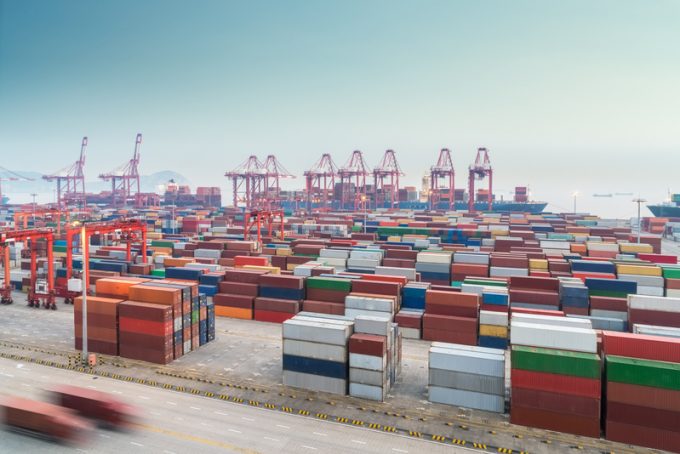Trade growth getting stronger, but ocean freight rates stay flattish
While rates on the transpacific continued to soften, and Asia-Europe trades showed marginal gains, the ...

Drewry’s WCI container spot rate index was a sea of red ink again this week, ahead of a planned wave of ocean carrier general rate increases (GRIs) next month.
The unrelenting erosion of spot rates will be of particular concern for Asia-North Europe carriers.
Despite extensive blankings on the route, superseded by the 2M announcement of winter schedules and this week’s suspension of a service loop by THE Alliance, they seem unable to halt the decline in short-term rates.
The WCI Asia-North Europe average spot rate shed another 2% this week, to $1,004 per 40ft, while Xeneta’s XSI average rate for the route edged down 1%, to $960 per 40ft, having lost 15% so far this month.
Moreover, after briefly reacting to the FAK [freight all kinds] hikes planned for 1 November, which proposed a doubling of market rates to circa $1,800 per 40ft, carriers appear to have eased the implementation date.
Indeed, after being “shocked” by the size of the rate increase a week ago that a UK-based shipper advised The Loadstar was being applied for his Chinese exports by all carriers, this week he was “pleasantly surprised”. He said: “I managed to log in with a couple of lines and they have now extended our rates through to 18 November.”
It follows that the next few weeks will be ‘make or break’ for Asia-North Europe carriers, which must get spot rates heading back up to support their forthcoming annual contract negotiations.
And it’s not only on the headhaul trade where carriers need to push up rates, on the backhaul North Europe-Asia route net rates have collapsed into negative territory. For example, MSC this week issued a price announcement for backhaul trades from Europe declaring a new FAK base rate of $400 per 40ft, effective 1 November.
Meanwhile, on the transpacific, it is a better story for Asia-US west coast carriers, as imports bounced back in September at the San Pedro Bay ports of Los Angeles and Long Beach, with volumes up 14% and 19% respectively. year on year.
“Consumer confidence is on the rise,” commented Port of Long Beach CEO Mario Cordero, claiming shippers could rely on the port again following the signing of the new six-year west coast labour contract.
It remains unclear how much of the spike in volumes in September at the LA and LB terminals was to do with rising consumer confidence in the US, or a consequence of the new labour agreement and Panama Canal transit restrictions impacting Asia-US east coast services.
John McCown’s recently published analysis of container throughput at the top ten US container ports shows that, while west coast ports grew by a cumulative 16.7% last month, versus the previous year, east coast ports suffered a 13.4% decline, with New York & New Jersey seeing a 20.2% drop in volume.
The XSI’s Asia-US west coast component recorded a 2% increase this week, to take the average rate to $1,752 per 40ft, while the WCI’s Asia-US east coast average rate fell 3%, to $2,552 per 40ft.
Elsewhere, transatlantic spot rates have stabilised, albeit at a level significantly lower than before the pandemic, with the XSI spot flat this week at $1,327 per 40ft.
Comment on this article